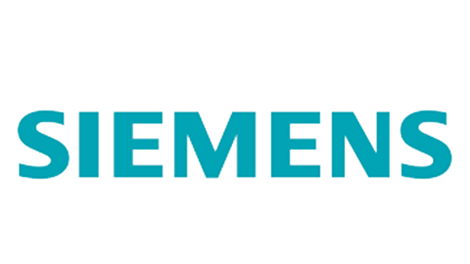Siemens – AI leader Vasi Philomin joins Siemens to scale Industrial AI innovation
- Strategic hire strengthens Siemens’ leadership in industrial AI
- Reporting to Peter Koerte, member of the Managing Board, Chief Technology Officer and Chief Strategy Officer
- Appointment effective July 1, 2025
Vasi Philomin has been appointed Executive Vice President and Head of Data & Artificial Intelligence, effective July 1, 2025. In this role, he will further accelerate the development and growth of Siemens’ comprehensive AI portfolio to create additional customer value.
Siemens is rapidly scaling and expanding its AI-powered offerings, which currently includes 35 applications – among them, the award-winning Industrial Copilot. Under Philomin’s leadership, the company will also drive the development of an industrial foundational model that delivers industrial-grade AI for customers – designed to be safe, secure, reliable, and trustworthy. He will report directly to Peter Koerte, Member of the Managing Board, Chief Technology Officer and Chief Strategy Officer, Siemens AG.
Philomin joins Siemens from Amazon, where he most recently served as Vice President of Generative AI, leading Amazon Web Services’ (AWS) AI product strategy. At Amazon, he was instrumental in building Amazon Bedrock and overseeing the development of foundation models. His expertise spans advanced machine learning, platform architecture, and enterprise-scale AI deployment.
“We are delighted to welcome Vasi Philomin to Siemens. Vasi brings a rare combination of deep technical expertise, strategic vision, and strong record in execution,” said Peter Koerte. “His outstanding expertise in AI and proven leadership in building transformative technologies will be instrumental in scaling our data and AI capabilities, unlocking new opportunities across our technology stack, and delivering even greater value to our customers.”
Commenting on his new role, Vasi Philomin said: “I’m thrilled to join Siemens at a time when the boundaries between the physical and digital worlds are being redrawn by AI. The next great frontier for artificial intelligence is the physical world – powering machines, factories, and infrastructure that sense, reason, and act. Siemens, with its unmatched domain expertise and global industrial footprint, is uniquely positioned to lead this transformation. I’m excited to help shape this future, building breakthrough technologies, fostering deep partnerships, and turning bold ideas into real-world impact.”
Vasi Philomin brings more than two decades of experience in technology leadership. Before joining Amazon, he held senior roles at Philips, where he led global innovation initiatives in computer vision and connected systems. He holds a PhD in Computer Science with a focus on machine learning and computer vision, as well as dual Master’s degrees in Mechanical Engineering and Computer Science from the University of Maryland, USA. Philomin is also the inventor on more than 100 U.S. patents.
SourceSiemens
EMR Analysis
More information on Siemens AG: See full profile on EMR Executive Services
More information on Dr. Roland Busch (President and Chief Executive Officer, Siemens AG): See full profile on EMR Executive Services
More information on Peter Körte (Member of the Managing Board and Chief Technology and Chief Strategy Officer with responsibility for Siemens Xcelerator and Siemens Advanta, Siemens AG): See the full profile on EMR Executive Services
More information on Vasi Philomin (Executive Vice President, Head of Data & Artificial Intelligence, Siemens AG): See the full profile on EMR Executive Services
More information on Industrial Copilot by Siemens: https://www.siemens.com/global/en/products/automation/topic-areas/industrial-ai/industrial-copilot.html + Generative AI is gaining momentum across industries. With our vision of Industrial Copilots along the entire value chain, we want to unlock this potential to improve human-machine collaboration and accelerate development and innovation cycles. Together with our partners, we make generative AI a reality for our customers on a broad scale. For more sustainable operations and a better tomorrow!
We integrate generative AI into Siemens Industrial Copilots to optimize workflows and enhance human-AI collaboration, driving innovation and productivity across industries. With a comprehensive suite of Industrial Copilots, we offer not just a single solution but cover the entire industrial value chain – from design and planning to engineering, operations, and service. User-friendly and easy to implement, our solutions make generative AI accessible and streamline every phase efficiently.
More information on Amazon: https://www.amazon.com + Amazon is guided by four principles: customer obsession rather than competitor focus, passion for invention, commitment to operational excellence, and long-term thinking. Amazon strives to be Earth’s Most Customer-Centric Company, Earth’s Best Employer, and Earth’s Safest Place to Work. Customer reviews, 1-Click shopping, personalized recommendations, Prime, Fulfillment by Amazon, AWS, Kindle Direct Publishing, Kindle, Career Choice, Fire tablets, Fire TV, Amazon Echo, Alexa, Just Walk Out technology, Amazon Studios, and The Climate Pledge are some of the things pioneered by Amazon.
More information on Jeffrey P. Bezos (Executive Chair, Amazon): See the full profile on EMR Executive Services
More information on Andy Jassy (President and Chief Executive Officer, Amazon): See the full profile on EMR Executive Services
More information on Amazon Web Services, Inc. (AWS) by Amazon: https://aws.amazon.com + Amazon Web Services (AWS) is the world’s most comprehensive and broadly adopted cloud platform, offering over 200 fully featured services from data centers globally. Millions of customers—including the fastest-growing startups, largest enterprises, and leading government agencies—are using AWS to lower costs, become more agile, and innovate faster.
More information on Adam Selipsky (Chief Executive Officer, Amazon Web Services (AWS), Amazon): https://ir.aboutamazon.com/officers-and-directors/person-details/default.aspx?ItemId=5b088699-f1e4-4381-832e-f3b8ae75e52d + https://www.linkedin.com/in/adamselipsky/
More information on Amazon Bedrock by Amazon: https://aws.amazon.com/bedrock/ + The easiest way to build and scale generative AI applications with foundation models.
Amazon Bedrock is a fully managed service that offers a choice of high-performing foundation models (FMs) from leading AI companies like AI21 Labs, Anthropic, Cohere, DeepSeek, Luma, Meta, Mistral AI, poolside (coming soon), Stability AI, TwelveLabs (coming soon), Writer, and Amazon through a single API, along with a broad set of capabilities you need to build generative AI applications with security, privacy, and responsible AI. Using Amazon Bedrock, you can easily experiment with and evaluate top FMs for your use case, privately customize them with your data using techniques such as fine-tuning and Retrieval Augmented Generation (RAG), and build agents that execute tasks using your enterprise systems and data sources. Since Amazon Bedrock is serverless, you don’t have to manage any infrastructure, and you can securely integrate and deploy generative AI capabilities into your applications using the AWS services you are already familiar with.
More information on Signify: See the full profile on EMR Executive Services
More information on Željko Kosanović (Member of the Board + Chief Financial Officer + Senior Vice President, Group Controller, Signify + Interim Chief Executive Officer, Signify till September 1st, 2025): See the full profile on EMR Executive Services
More information on As Tempelman (Chief Executive Officer, Eneco till September 1st, 2025 + Member of the Board + Chief Executive Officer, Signify as from September 1st, 2025): See the full profile on EMR Executive Services
More information on Philips Lighting: https://www.lighting.philips.com/main/home + Philips is one of the world’s most trusted lighting brands. Since 1891, Philips has been synonymous with high-quality, reliable, innovative technology that improve people’s lives. The Philips brand is licensed to Signify, world leader in lighting, for lighting products and services. Philips is Signify’s primary brand for lamps, luminaires, and other lighting products for both professionals and consumers.
Signify products carrying the Philips brand cover the complete range of lighting applications, from home, office, and industry to street lighting, horticulture, sports, and more.
EMR Additional Notes:
- AI – Artificial Intelligence:
- Artificial intelligence is the simulation of human intelligence processes by machines, especially computer systems.
- As the hype around AI has accelerated, vendors have been scrambling to promote how their products and services use AI. Often what they refer to as AI is simply one component of AI, such as machine learning. AI requires a foundation of specialized hardware and software for writing and training machine learning algorithms. No one programming language is synonymous with AI, but well a few, including Python, R and Java, are popular.
- In general, AI systems work by ingesting large amounts of labeled training data, analyzing the data for correlations and patterns, and using these patterns to make predictions about future states. In this way, a chatbot that is fed examples of text chats can learn to produce lifelike exchanges with people, or an image recognition tool can learn to identify and describe objects in images by reviewing millions of examples.
- AI programming focuses on three cognitive skills: learning, reasoning and self-correction.
- The 4 types of artificial intelligence?
- Type 1: Reactive machines. These AI systems have no memory and are task specific. An example is Deep Blue, the IBM chess program that beat Garry Kasparov in the 1990s. Deep Blue can identify pieces on the chessboard and make predictions, but because it has no memory, it cannot use past experiences to inform future ones.
- Type 2: Limited memory. These AI systems have memory, so they can use past experiences to inform future decisions. Some of the decision-making functions in self-driving cars are designed this way.
- Type 3: Theory of mind. Theory of mind is a psychology term. When applied to AI, it means that the system would have the social intelligence to understand emotions. This type of AI will be able to infer human intentions and predict behavior, a necessary skill for AI systems to become integral members of human teams.
- Type 4: Self-awareness. In this category, AI systems have a sense of self, which gives them consciousness. Machines with self-awareness understand their own current state. This type of AI does not yet exist.
- Machine Learning (ML):
- Developed to mimic human intelligence, it lets the machines learn independently by ingesting vast amounts of data, statistics formulas and detecting patterns.
- ML allows software applications to become more accurate at predicting outcomes without being explicitly programmed to do so.
- ML algorithms use historical data as input to predict new output values.
- Recommendation engines are a common use case for ML. Other uses include fraud detection, spam filtering, business process automation (BPA) and predictive maintenance.
- Classical ML is often categorized by how an algorithm learns to become more accurate in its predictions. There are four basic approaches: supervised learning, unsupervised learning, semi-supervised learning and reinforcement learning.
- Deep Learning (DL):
- Subset of machine learning, Deep Learning enabled much smarter results than were originally possible with ML. Face recognition is a good example.
- DL makes use of layers of information processing, each gradually learning more and more complex representations of data. The early layers may learn about colors, the next ones about shapes, the following about combinations of those shapes, and finally actual objects. DL demonstrated a breakthrough in object recognition.
- DL is currently the most sophisticated AI architecture we have developed.
- Computer Vision (CV):
- Computer vision is a field of artificial intelligence that enables computers and systems to derive meaningful information from digital images, videos and other visual inputs — and take actions or make recommendations based on that information.
- The most well-known case of this today is Google’s Translate, which can take an image of anything — from menus to signboards — and convert it into text that the program then translates into the user’s native language.
- Machine Vision (MV):
- Machine Vision is the ability of a computer to see; it employs one or more video cameras, analog-to-digital conversion and digital signal processing. The resulting data goes to a computer or robot controller. Machine Vision is similar in complexity to Voice Recognition.
- MV uses the latest AI technologies to give industrial equipment the ability to see and analyze tasks in smart manufacturing, quality control, and worker safety.
- Computer Vision systems can gain valuable information from images, videos, and other visuals, whereas Machine Vision systems rely on the image captured by the system’s camera. Another difference is that Computer Vision systems are commonly used to extract and use as much data as possible about an object.
- Generative AI (GenAI):
- Generative AI technology generates outputs based on some kind of input – often a prompt supplied by a person. Some GenAI tools work in one medium, such as turning text inputs into text outputs, for example. With the public release of ChatGPT in late November 2022, the world at large was introduced to an AI app capable of creating text that sounded more authentic and less artificial than any previous generation of computer-crafted text.
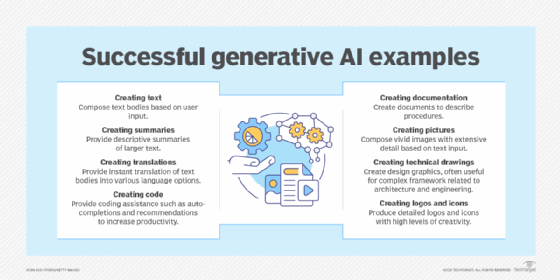
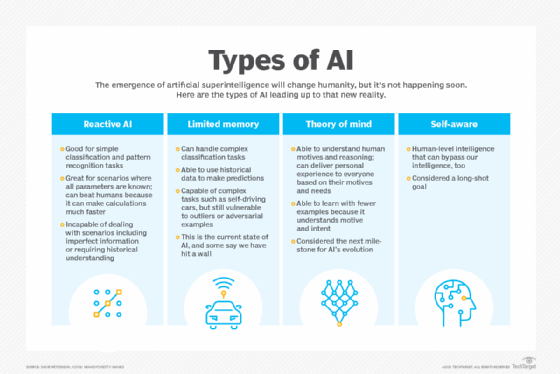
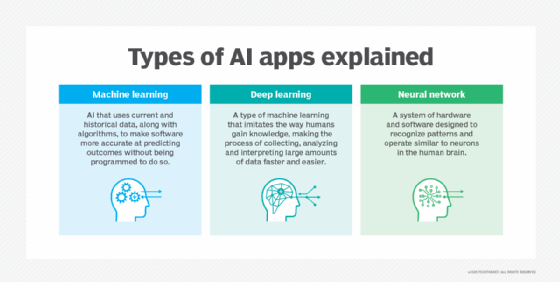
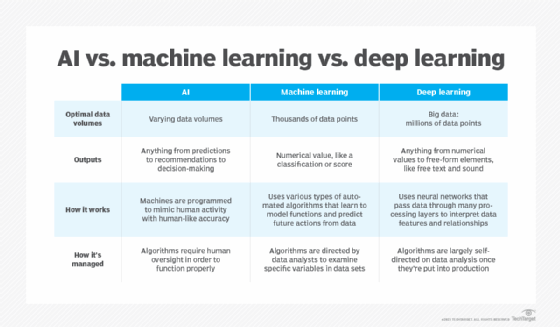
- Edge AI Technology:
- Edge artificial intelligence refers to the deployment of AI algorithms and AI models directly on local edge devices such as sensors or Internet of Things (IoT) devices, which enables real-time data processing and analysis without constant reliance on cloud infrastructure.
- Simply stated, edge AI, or “AI on the edge“, refers to the combination of edge computing and artificial intelligence to execute machine learning tasks directly on interconnected edge devices. Edge computing allows for data to be stored close to the device location, and AI algorithms enable the data to be processed right on the network edge, with or without an internet connection. This facilitates the processing of data within milliseconds, providing real-time feedback.
- Self-driving cars, wearable devices, security cameras, and smart home appliances are among the technologies that leverage edge AI capabilities to promptly deliver users with real-time information when it is most essential.
- Multimodal Intelligence and Agents:
- Subset of artificial intelligence that integrates information from various modalities, such as text, images, audio, and video, to build more accurate and comprehensive AI models.
- Multimodal capabilities allows to interact with users in a more natural and intuitive way. It can see, hear and speak, which means that users can provide input and receive responses in a variety of ways.
- An AI agent is a computational entity designed to act independently. It performs specific tasks autonomously by making decisions based on its environment, inputs, and a predefined goal. What separates an AI agent from an AI model is the ability to act. There are many different kinds of agents such as reactive agents and proactive agents. Agents can also act in fixed and dynamic environments. Additionally, more sophisticated applications of agents involve utilizing agents to handle data in various formats, known as multimodal agents and deploying multiple agents to tackle complex problems.
- Small Language Models (SLM) and Large Language Models (LLM):
- Small language models (SLMs) are artificial intelligence (AI) models capable of processing, understanding and generating natural language content. As their name implies, SLMs are smaller in scale and scope than large language models (LLMs).
- LLM means large language model—a type of machine learning/deep learning model that can perform a variety of natural language processing (NLP) and analysis tasks, including translating, classifying, and generating text; answering questions in a conversational manner; and identifying data patterns.
- For example, virtual assistants like Siri, Alexa, or Google Assistant use LLMs to process natural language queries and provide useful information or execute tasks such as setting reminders or controlling smart home devices.
- Agentic AI:
- Agentic AI is an artificial intelligence system that can accomplish a specific goal with limited supervision. It consists of AI agents—machine learning models that mimic human decision-making to solve problems in real time. In a multiagent system, each agent performs a specific subtask required to reach the goal and their efforts are coordinated through AI orchestration.
- Unlike traditional AI models, which operate within predefined constraints and require human intervention, agentic AI exhibits autonomy, goal-driven behavior and adaptability. The term “agentic” refers to these models’ agency, or, their capacity to act independently and purposefully.
- Agentic AI builds on generative AI (gen AI) techniques by using large language models (LLMs) to function in dynamic environments. While generative models focus on creating content based on learned patterns, agentic AI extends this capability by applying generative outputs toward specific goals.
- High-Density AI:
- High-density AI refers to the concentration of AI computing power and storage within a compact physical space, often found in specialized data centers. This approach allows for increased computational capacity, faster training times, and the ability to handle complex simulations that would be impossible with traditional infrastructure.

